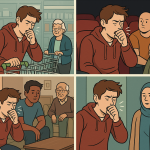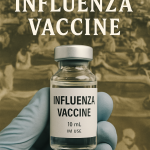It’s one of the most persistent—and most painful—fears to come out of the pandemic.
“My dad went into the hospital. They put him on a ventilator. He never came out. The ventilator killed him.”
You’ve probably heard it. Maybe even said it.
And when you’re grieving, when you’re angry, when nothing makes sense—it’s easy to believe.
But the truth?
Ventilators didn’t kill COVID patients. COVID did.
And the data—along with a bit of psychology—can help us understand why this fear took hold—and how to let it go.
😷 What Ventilators Actually Do
Ventilators are not experimental. They’re not controversial.
They are a standard, lifesaving tool used in ICUs worldwide to help people breathe when they no longer can.
In COVID’s worst cases, the virus attacked the lungs so severely that patients couldn’t absorb oxygen—even with high-flow masks. At that point, the ventilator wasn’t a choice.
It was the only thing left.
But ventilators don’t heal.
They buy time—for the body to fight, for meds to work, for a chance to live.
📉 Why Did So Many Ventilated Patients Die?
In the early months of COVID, death rates among ventilated patients were terrifying—sometimes over 80%. But what’s often left out:
- These patients were already in multi-organ failure
- Most had severe preexisting conditions
- Hospitals were overwhelmed, and treatments were limited
So yes—many people died on ventilators.
But not because of the ventilator.
They died because they were already critically ill.
To be fair, some early fear wasn’t entirely unfounded.
Doctors were flying blind. Ventilator settings were often too aggressive. But the lesson wasn’t “avoid ventilators.”
It was “use them better.” And that’s exactly what happened.
🤔 Why Do People Blame the Machine?
This fear didn’t spread because of data.
It spread because of emotion—and the way our brains process trauma.
🧠 1. The emotional sequence
Your loved one was alive. Then they were ventilated. Then they died.
It feels like cause and effect—even if it’s not.
🧠 2. The power of one story
You hear, “My aunt got intubated and never woke up.” You feel that.
What you don’t hear: the thousands who survived—especially as treatment improved.
By late 2020, survival rates for ventilated patients in many hospitals hit 60–70%.
🧠 3. We want control
If the virus is the killer, we’re helpless.
But if a decision or machine was to blame, at least it makes sense.
It gives shape to the chaos—even when it’s wrong.
🧠 4. Trust had collapsed
When people lost trust in institutions—sometimes for good reasons—alternative explanations filled the void.
And yes—hospitals did receive higher reimbursements for COVID patients on vents.
But that’s because these patients required more care—not because hospitals were incentivized to intubate unnecessarily.
The financial structure followed medical reality—not the other way around.
📊 What the Data Actually Shows
As the pandemic progressed, doctors adapted.
They changed ventilation strategies. Used less pressure. Delayed intubation when possible.
By late 2020, mortality dropped from 80% to 30–40%.
In some hospitals, most ventilated patients survived.
That’s not evidence ventilators kill.
That’s evidence of learning—and professionals fighting like hell to keep people alive.We owe it to them—and each other—to get the story right, so no one delays care out of fear.
🤝 What You Could Reasonably Conclude
If you were cautious in early 2020, you weren’t wrong.
The data was bad. Hospitals were overwhelmed.
Being skeptical made sense—until the evidence changed.
You weren’t alone in doubting.
Many families hesitated. Some waited too long.
What might have been caution became risk.
You’re not alone.
💔 What This Fear Actually Hurts
This fear causes families to delay care, fearing the treatment more than the disease.
It blames frontline workers—people who held phones to patients’ faces so loved ones could say goodbye.
It erodes trust in real medicine—and replaces it with viral rumors.
🧭 The Bottom Line
Ventilators weren’t the enemy.
They were the last chance.
When people died on ventilators, it wasn’t because the machine failed.
It was because COVID pushed them beyond the edge, and the ventilator was the last rope we had to pull them back.
Sometimes it worked. Sometimes it didn’t.
But blaming the rope doesn’t help us understand the fall.
The medical community learned and adapted—fast.
If you were skeptical early on, you weren’t wrong to ask questions.
The answers changed as we learned more. And that’s okay.
As we’ve all learned the hard way—the risk isn’t what it was.
What once felt like protection could now be a deadly delay.
And that’s worth talking about—openly, honestly, and together. If this helped you think through the timeline differently—or if someone you know is still afraid—share your thoughts. These conversations matter.
Last Updated on June 27, 2025







